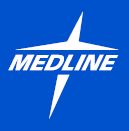Welcome to the American Association of Post-Acute Care Nursing
The American Association of Post-Acute Care Nursing (AAPACN®) represents more than 19,000 post-acute care nurses and professionals working in more than 7,000 facilities. Dedicated to supporting PAC nurses and healthcare professionals in providing quality care, AAPACN offers members best in-class education, certification, resources, and strong collaborative communities.
Latest From AAPACN
- How to Hire the Best NP—Even if Someone Else Is Doing the Hiring
 The director of nursing services (DNS) in a nursing home often is presented with a newly hired nurse practitioner (NP) or other advanced practice registered nurse (APRN) as a fait …
The director of nursing services (DNS) in a nursing home often is presented with a newly hired nurse practitioner (NP) or other advanced practice registered nurse (APRN) as a fait … - Working With NPs and Other APRNs: Learn to Maximize the Benefits
 Increasingly, nurse practitioners (NPs) and clinical nurse specialists (CNSs), also known as advanced practice registered nurses (APRNs), work either directly for or closely with nursing homes to improve resident care …
Increasingly, nurse practitioners (NPs) and clinical nurse specialists (CNSs), also known as advanced practice registered nurses (APRNs), work either directly for or closely with nursing homes to improve resident care … - Mock Drills for Abuse Situations
 A resident-to-resident incident occurred on the dementia unit, resulting in an injury to one resident. The altercation surprised the staff, so their response to the situation was not immediate. Additionally, …
A resident-to-resident incident occurred on the dementia unit, resulting in an injury to one resident. The altercation surprised the staff, so their response to the situation was not immediate. Additionally, … - Draft MDS v1.19.1 Data Specs: What to Know and How to Prepare for Oct. 1, 2024
 Nurse assessment coordinators (NACs) and other interdisciplinary team members can breathe a little easier as they look ahead to the Oct. 1, 2024 implementation of the MDS version 1.19.1 item …
Nurse assessment coordinators (NACs) and other interdisciplinary team members can breathe a little easier as they look ahead to the Oct. 1, 2024 implementation of the MDS version 1.19.1 item …
Find more articles.
Free Member Tools
- Mock Abuse Drill Toolkit
- Documentation Template: Isolation for Active Infectious Disease
- MDS 3.0 Final Validation Reports Quick Facts and Resources
- AAPACN’s Nursing Department Culture Assessment and Improvement Worksheet
- 2024 Five-Star and Care Compare MDS 3.0 Quality Measure Data Periods
- Dialysis Communication Sheet
- PDPM At-a-Glance Tool
- MDS Daily Startup for the NAC Backup Tool
- MDS Items Impacting Reimbursement for PDPM and SNF QRP – Updated Tool
- Sections K and O Assessment Periods
- At-a-Glance QM, QRP, and VBP Tool
Find more tools.

























